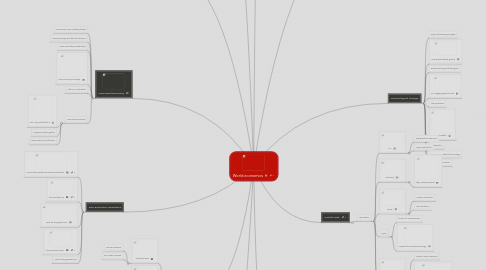
1. Four economic resources
1.1. Land resources
1.1.1. Natural resources
1.1.2. soil, water, minerals
1.2. Labour Resources:
1.2.1. People for work
1.3. Capital Resources
1.3.1. Money
1.3.2. goods (transportation, factories)
1.4. Entrepreneurship
1.4.1. Person in charge
1.4.2. combine four economic resources
1.4.3. Benefits the whole region
2. Market Economy
2.1. Profits: -driven by profits -products sold higher than produces
2.2. Problems: -usually goes through a cycle of economic depression -entrepreneurs get large profits -labour workers get low profits
2.3. Profits/protecting environment -Most business choose profits; the easy way -companies find protecting environment too pricey
3. Five Economic Questions
3.1. How are the goods and services produced?
3.2. Who are they for?
3.3. How are they given out?
3.4. Who produces them?
3.5. What is being produced?
4. Command Economy
4.1. Government are not freely elected
4.2. One person/group makes all decisions
4.3. Some are military dictatorship
4.4. Lots of money on military
4.5. Little or no education
4.6. Communist economy
4.6.1. Karl Marx introduced it
4.6.2. everyone works together
4.6.3. Equal share of productions
5. Global Trade Alliances
5.1. European Union (EU)
5.1.1. world wars impacted economies
5.1.2. Free trade union
5.1.3. A trade bloc
5.1.4. 12 countries formed EU (1957)
5.2. Organization of Petroleum Exporting Countries
5.2.1. 12 countries rely on oil
5.2.2. Maintain steady income
5.2.3. fair returns
5.2.4. Control the oil
5.2.5. second-biggest oil reserve (Canada)
6. Canada's Trade Links
6.1. WTO
6.1.1. A trade advisory group
6.1.2. Supports free trade
6.1.3. Issues trade sanctions
6.1.4. INvolvement causes competition
6.2. NAFTA
6.2.1. Canada, Mexico, and US
6.2.2. Agreement signed in 1994
6.2.3. Trade bloc to compete against EU
7. Traditional economy
7.1. For families/relatives
7.2. Based on cultural and religious values
7.3. concentrated where subsistence farmers are located
8. Mixed economy
8.1. Traditional & Market
8.1.1. Traditional economy with marketplaces
8.1.2. sells to tourists
8.2. Market & command
8.2.1. no "true" market
8.2.2. Government, business, and consumer affect productions
8.3. Traditional and Command
8.3.1. rely on subsistence agriculture
8.3.2. different methods of farming
8.4. Consumers & producers
8.4.1. Both affect the economy
8.4.2. Consumers
8.4.2.1. Affect the mixed economy
8.4.2.2. protect buyers from fraud
8.4.2.3. prevents fraud
8.4.3. Producers
8.4.3.1. Advertising used
8.4.3.2. Marketing boards promote products
8.4.3.3. Regulate the products
9. Industries
9.1. Primary industry
9.1.1. Harvesting natural resources
9.1.2. Fishing, forestry, farming, and mining
9.2. Secondary industry
9.2.1. Production of the goods/services
9.2.2. i.e. designing clothing
9.3. Tertiaryindustry
9.3.1. Selling of the product/service
9.3.2. Gives jobs oppurtunities
9.3.3. Selling/advertising the clothings
10. Technological change
10.1. ways of harvesting changed
10.2. Mining done above ground
10.3. Easily recording collected grain
10.4. CTL logging systems used
10.5. fast production
10.6. Brought wealth
10.7. creates jobs
10.8. farming uses satellite technology
10.9. little need for workers
11. World trade
11.1. Top traders
11.1.1. U.S.
11.1.1.1. plenty natural resources
11.1.1.2. large trade deficit
11.1.2. Germany
11.1.2.1. high quality products
11.1.3. China
11.1.3.1. Variety of resources
11.1.3.2. low cost labour
11.1.4. Japan
11.1.4.1. known for entrepreneurs
11.1.4.2. imports all minerals and energy
11.1.5. U.K.
11.1.5.1. limited natural resources
11.1.5.2. big supply of energy, oil, and gas
11.1.6. Canada
11.1.6.1. lots of natural resources
11.1.6.2. more than 80% exports go to U.S.
